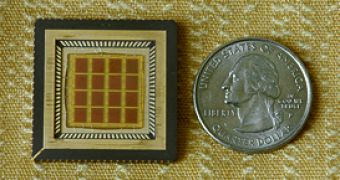Football, or soccer, as it is known outside Europe, is the king of sports on the continent. The World Cup is held every 4 years and the next one will take place in South Africa, in 2010. But there's another world cup scheduled this year, where this sport is hoped to attract a lot of fans.
Nanofootball or nanosoccer is the latest in nanoscale robotics. That's just to prove that science is not all that boring and not all scientists are geeks. Who cares that the players are six times smaller than an amoeba, a small unicellular organism? Or that the field can easily fit into a grain of rice?
It's still football. Guess who's organizing the big event? The National Institute of Standards and Technology (NIST) of the U.S. Department of Commerce will hold the first football games at the 2007 RoboCup in Atlanta, on July 7-8, 2007.
The competition has the main purpose of presenting the latest innovations and advances in various applications of artificial intelligence in robots. The game of football was considered a good testing ground, since a good player must be agile, easily controllable and effort-resistant.
The smallest robots in history have an average length of several microns and are really mechanical devices built onto semiconductor chips. The competitors are inversely proportional in size with their players: Carnegie Mellon University, the U.S. Naval Academy, Simon Fraser University (Canada) and the Swiss Federal Institute of Technology.
Sure, it takes an optical microscope to actually see the players, controlled by remote electronic devices via visual feedback, but this won't stop their creators from having fun playing with them, while performing important scientific experiments on the tiny machines.
The main events will be: a slalom drill, where polymer posts will act as defenders, a two-millimeter dash where the best time for a goal-to-goal sprint decides the winner and ball handling and juggling, where the robots are required to dribble as many nanoballs as possible in 3 minutes.
The nanobolls are microdisks with a diameter equal to that of a human hair.

 14 DAY TRIAL //
14 DAY TRIAL //